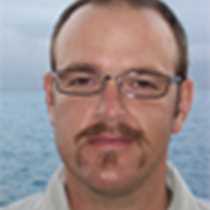A halo of sunbeams started to break through the clouds as we proceeded to land at Espumilla Beach on Santiago Island. We continued to walk in Darwin’s footsteps as he landed in this area in 1835. Darwin spent a total of almost nine days on this island, which was the most time spent on any of the four islands and 19 days he spent on land in the archipelago. An incredibly long beach with a forest of mangroves overlook the beachhead with hundreds of Pacific green sea turtle nests on the back dune area. We cut inland passing a dried brackish pond with thousands of small holes in the compacted sand. Fiddler and ghost crabs constantly excavate the sand searching for small morsels of plankton and food that has infiltrated during the last tidal change. Lush vegetation lines the trail as we started to gain altitude from our landing beach. The largest Palo Santo incense trees are found here and the odor permeates the air. Small flowers are present with the endemic morning glory standing out. A Galapagos flycatcher appears to be interested in us, as we may bring insects, however it promptly flies off. Close to the apex of our hike we cross a gully that has a smoothed basalt rock bed which only runs with heavy rains or an “El Nino” phenomenon. Upon our return we weave through incredibly large button mangrove trees and root systems arriving at the beach. A single brown pelican flies close to us on its journey down the coast and we return to a hearty breakfast. Our captain repositions the ship to Buccaneers Cove where we explore with kayaks, the glass-bottom boat, and snorkeling. A large spotted eagle ray passed us by and, with different species of fish all around, various guests also spotted a Pacific seahorse as a small shark sailed gracefully past.
A black sand beach greeted us as we landed at Puerto Egas. There are some remnants of a human settlement here. Up until the 1960’s there was a salt mining operation here, which included a dock, housing, packing area, and road system, however only the broken down memories remain. Some stay at the beach to explore the coast and snorkel. Hikers continued down the coast and find a mix of species including sea lions, American oystercatchers, whimbrels, and plovers. Close to the halfway point of the hike we come to the Galapagos fur seal grottos. Lava tubes have entered into the sea, some with collapsed roofs, which allow us to walk over suspended basalt “bridges” encountering the fur seals. Fur seals are somewhat nocturnal in their nature as they rest during the day along the rocky coasts. Almost hunted to extinction, they have made a wonderful comeback with conservation efforts and we are able to find a few. The sun started to disappear with hues from gold to orange and another Galapagos day has inspired us.




